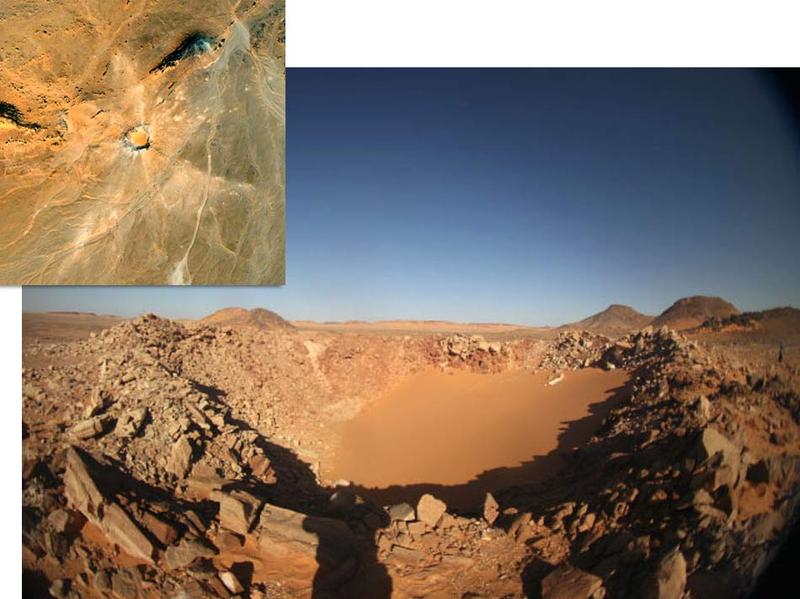
Sometime in the past 5000 years, a small iron meteorite slammed into the southwest corner of Egypt, punching a 45-meter-wide crater into the rock and sand. A new study suggests that small meteorites like this may survive their plunge through Earth's atmosphere intact much more often than previously suspected. And that means these objects could pose a greater danger than once believed.
Although small impact craters are common features on the moon and other airless bodies in our solar system, they're rare on Earth: Only 15 of our planet's 176 or so known craters measure less than 300 meters across. But that rarity doesn't stem from a lack of objects whizzing through our cosmic neighbourhood. Instead, two other factors are at play. Many small objects break apart as they plummet through the atmosphere, either disintegrating entirely or surviving to leave multiple craters. Also, the craters blasted by those objects that do reach the ground are quickly masked by erosion or other geological processes not present on other worlds. But the Egyptian impact is causing scientists to rethink their notions of how often iron meteorites fall to Earth in one piece.
The so-called Kamil crater, named for the nearest mountain, was discovered in autumn 2008 during a low-altitude aerial survey conducted for Google Earth. A field expedition to the site in February 2009 recovered more than 5000 fragments of nickel-rich iron that together weighed more than 1.7 metric tons - a sure sign that the meter-deep crater had been blasted by an iron meteorite. In next month's issue of Geology, Massimo D'Orazio, a geochemist at the University of Pisa in Italy, and his colleagues estimate that at impact the meteorite weighed about 9.1 metric tons, which suggests that the object weighed between 20 and 40 metric tons before it entered the atmosphere.
Previous studies of Earth's small craters indicate that objects weighing less than 3000 metric tons typically break apart to form multiple craters on impact. As of a decade ago, only three of the 12 iron meteorites in that class had survived their fiery fall to make a single crater. But the Kamil finding, along with a little-studied crater in Alberta, Canada, that was also formed by the impact of a small iron meteorite, boosts the proportion of such objects that struck Earth intact from one-fourth to more than one-third.
The apparent rise in survival rates may be due simply to having a larger sample size that better represents the objects slamming into the planet, says Philip Bland, a planetary scientist at Imperial College London. "The more of these craters we find, the better our statistical model of meteorite survival can be," he notes.
Whether an object survives its plunge through the atmosphere depends on its material properties and its history, Bland adds. Objects that have suffered repeated collisions in space may be highly fractured and readily break up during their plunge to Earth, whereas those made of a relatively intact mass of fine-grained iron would have a better chance of landing in one piece.
As is often portrayed in movies such as Armageddon, an extraterrestrial object that strikes Earth in one piece does more damage than one that lands in several smaller fragments. Thus, the new findings suggest that earthlings may face somewhat more danger from meteorites than previously recognized.



Reader Comments
to our Newsletter